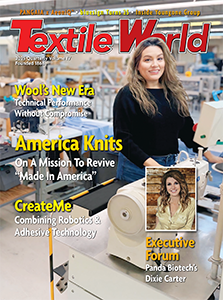WILMINGTON, Del. — June 8, 2018 — DuPont Industrial Biosciences (IB) officially opened the doors of its renovated global business headquarters today in Wilmington, Del. This new center of technological innovation, known as Building E353, is part of DuPont’s Experimental Station — the breeding ground for numerous paradigm-shifting technologies over the decades from nylon to DuPont™ Kevlar® to Lycra® to IB’s own renewably sourced Sorona®.
The researchers, business teams and cutting-edge laboratories at the new E353 facility will continue the tradition of innovation and scientific advancement on the historic Experimental Station site, while fostering the next wave of progress in industrial biosciences that results in better and more sustainable products and processes for customers across the globe.
“At this new facility, we have hundreds of people working toward a more sustainable future by innovating biobased solutions that are better, safer and more renewable. These technologies go into products that are used in everyday life,” said William Feehery, president of DuPont Industrial Biosciences. “The redesigned and upgraded laboratories and office spaces are incubators for some of DuPont’s most groundbreaking work.”
The revitalization of Building E353 is part of a more than $200 million investment in the Experimental Station campus, which began in 2016 and encompasses about 50 buildings, with over 2 million square feet of space. The E353 refurbishment focused on modernization, consolidation and advanced capabilities, including:
- Advanced, high-throughput instrumentation, state-of-the-art bioinformatics and genomics capabilities to accelerate discovery and applications research.
- Cutting-edge genome editing capabilities using CRISPR (Clustered Regularly Interspaced Short Palindromic Repeats) to accelerate microbial production host development.
- Microbiological labs to evaluate tailored animal health solutions and to conduct microbiome science for probiotics product development.
- Highly leveraged fermentation labs to advance “cell factory” end-to-end development and commercialization.
- Leading-edge chemistry and bioprocess science and engineering capabilities to establish high-performance biomaterials platforms.
“This building and the state-of-the-art research performed by talented and diverse employees builds on DuPont’s legacy of discovery and innovation,” said Marc Doyle, COO of DowDuPont Specialty Products Division. “As we enter our next phase of growth, we are excited that the Specialty Products Division will carry the DuPont name and continue to call Delaware home. The new DuPont will be a premier innovation-driven leader delivering highly specialized products and solutions that transform industries and improve everyday life.”
“DuPont has a long history of scientific discovery in Delaware,” said Delaware Governor John Carney. “We’re proud to help announce the opening of the DuPont Industrial Biosciences Global Headquarters. The Experimental Station remains a vital hub for science and innovation, and we’re working together on campus to promote early-stage companies at the Delaware Innovation Space. The fact is Delaware remains a great place for companies of any size to put down roots, grow and create jobs. We look forward to our continued work together with DowDuPont.”
“DuPont continues to build its centuries-old legacy of researching and creating new products in Delaware,” said U.S. Senator Tom Carper. “This facility will help keep and attract good-paying jobs here in the First State.”
“From stain-busting enzymes to next-generation biofuels, the products being developed inside the Industrial Biosciences building are exciting for DuPont, Delaware, and the world,” said U.S. Senator Chris Coons. “This state-of-the-art facility represents DuPont’s commitment to Delaware, and with the brilliant men and women who work there every day, the possibilities are endless.”
“DuPont has once again chosen to expand its Delaware roots and tradition of scientific advancement with the official opening of the Industrial Biosciences global business headquarters in Wilmington. The company’s continued investment in the First State will provide hundreds of good paying jobs and drive economic activity throughout the region,” said Congresswoman Lisa Blunt Rochester. “Equipped with state-of-the-art technologies and cutting-edge laboratories, DuPont’s new facility will allow its scientists and researchers to continue their work on ground-breaking, sustainable and renewable products used in everyday life. I am looking forward to the next generation of life-changing, innovative solutions to come out of DuPont’s recently renovated and modernized headquarters.”
“We are collaborating with DuPont to win the future,” said New Castle County Executive Matt Meyer. “We win the future when DuPont Industrial Biosciences chooses to construct its state-of-the-art headquarters right here in New Castle County. For generations to come, Delawareans will be developing innovative, life-saving products for the world at this site.”
Posted June 8, 2018
Source: DowDuPont




